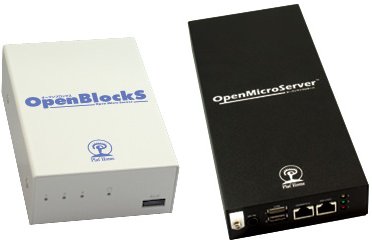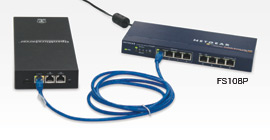Linux takes to high seas, chicken coop
Oct 23, 2008 — by Eric Brown — from the LinuxDevices Archive — 5 views Plat'Home announced the results of its “Will Linux Work?” contest in which developers stretched the limits of the company's Linux-based OpenMicroServer (OMS). Four winning designs were selected, including a sailboat navigator, a home automation system, an irrigation control system, and a chicken-coop door controller.
Plat'Home announced the results of its “Will Linux Work?” contest in which developers stretched the limits of the company's Linux-based OpenMicroServer (OMS). Four winning designs were selected, including a sailboat navigator, a home automation system, an irrigation control system, and a chicken-coop door controller.
(Click for larger view of Steve Castellotti's Linux-controlled trimaran)
The “Will Linux Work?” contest began in late July, with an unspecified number of contestants vying for the top four awards. Participants were asked to push an OMS server's limits in extreme and unusual environments, says the company.
The OpenMicroServer and smaller OpenBlock S are simple, heat-resistant servers that have been sold in Japan for many years, but have been recently introduced to the U.S. The OMS is the larger of the two, measuring 9 x 4 x 1.3 inches. The embedded server runs Plat'Home SSD/Linux on an RMI Alchemy Au1550 system-on-chip (SoC) clocked at 400MHz, and is equipped with 128MB of PC133 SDRAM, 16MB flash, and a Type II CompactFlash slot. Connectivity features include dual gigabit Ethernet ports, a 10/100 port, two USB 2.0 ports, and two serial interfaces on RJ-45 ports. It also offers eight digital I/O bits, and supports PoE (power-over-Ethernet).

The OpenBlock S (left) and OpenMicroServer (OMS) on the right
The OMS offers a “semi-hermetic” design that is said to guard against dust in “industrial production” environments, while enduring temperatures up to 122 degrees F (50 degrees C). More recently, the company introduced a Kanshi BlockS Pro version of the smaller OpenBlock S server, designed for monitoring networks and servers for failures.
The winning projects of the OMS “Will Linux Work?” contest, all of which are in various stages of completion, include the following:
- Trimaran GPS and monitoring device, Steve Castellotti — To control GPS navigation and monitoring on his trimaran (pictured at top), New Zealand-based Castellotti put the OMS to work as a low-weight, low-power server to monitor GPS positioning, engine data, fuel reserves, and fuel consumption, says Plat'Home. The server is also used to connect to the Internet via a wireless connection, and back up his laptop. The device uses an attached 1TB external hard drive and an Apple iPod, which is used as an additional USB storage device. Environmental hazards include motion, vibrations, wide temperature swings, salt water corrosion, and risk of electrolysis from lack of proper grounding.

The OMS gets connected - Home utility automation system, Martin Ewing — Ewing is developing an OMS-based automation system located in his basement. Designed to control home heating and hot water systems, the system offers applications for analyzing usage and minimizing costs. Ewing used tools including GCC, Python, Vim, Gnuplot, SSH, and Apache, and plans to make the software available under a GPLv3 license. Stated Ewing, “The great benefit of the system is in the development environment that supports advanced networking and language tools. Its small size, low power requirements and wide operating temperature range were ideal to accomplish my task.”
- Irrigation control system, Colin Duplantis — The OMS-based irrigation system controls irrigation, lawn watering, pond water supply, and drinking water for horses and other animals on a five-acre lot. Duplantis was able to port his homemade irrigation control software to C++, enabling him to run everything on the OMS, says Plat'Home. He uses an RS232 interface to control the irrigation controller, fine-tuning where, when, and how much water flows. Stated Duplantis, “I anticipate this new irrigation system will reduce my electricity bill and overall maintenance costs, not to mention the small size of the server frees up a lot of needed space in the irrigation house.”
- Chicken-coop security system, Gordon Smith — The coop system closes the coop door at dusk, using a simple network time protocol (SNTP) that queries another server to determine when sundown occurs each day. Before closing the door, though, the system makes sure all the chickens have returned to roost. Equipped with a webcam with IR capability for night vision, along with a computer vision library that counts the chickens, the system is said to be smart enough to differentiate between a chicken and a raccoon.
Availability
More technical details and ongoing blog posts from the winners of the “Will Linux Work?” contest should be available here.
This article was originally published on LinuxDevices.com and has been donated to the open source community by QuinStreet Inc. Please visit LinuxToday.com for up-to-date news and articles about Linux and open source.